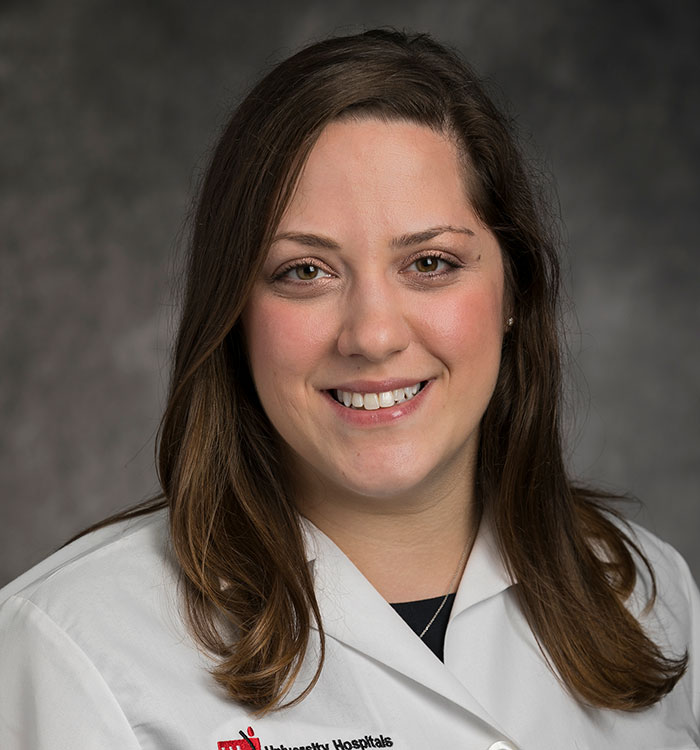Making a Difference in Pediatric Cancer and Blood Disorders
February 25, 2024

Basic research, clinical trials all in the mix
Innovations in Pediatrics | Winter 2024
The Division of Hematology-Oncology at UH Rainbow continues its impactful work. Here are a few recent highlights:
 Alex Huang, MD, PhD
Alex Huang, MD, PhD
STING Pathway and Cryoablation
The lasting success of tumor cryoablation procedures depends on immunology rather than physically freezing the tumor, with a key role for the essential immune defense protein STING in the tumor itself. That’s according to a new study led by senior author Alex Huang, MD, PhD, Director of the Center for Pediatric Immunotherapy at UH Rainbow Babies & Children’s Hospital, senior attending physician with UH Rainbow’s Angie Fowler Adolescent and Young Adult Cancer Institute and Theresia G. & Stuart F. Kline Family Foundation Chair in Pediatric Oncology. These findings raise the possibility of using STING as a biomarker to predict the success of tumor cryoablation and developing STING agonists to boost the level of this essential protein.
In experiments with murine models of rhabdomyosarcoma published in the Journal for the ImmunoTherapy of Cancer, Dr. Huang and colleagues show that STING found in tumor cells – and not in immune cells – is what’s important in understanding cryoablation response. This runs counter to what’s been previously understood about STING, Dr. Huang says. The team further found that many tumors actually turn off the crucial STING pathway, making new therapies even more necessary.
“Contrary to current literature dictating an essential role of host-derived STING activation as a driver of antitumor immunity in vivo, we show that local tumor control, lung metastasis, and the abscopal effect on distant tumor are all critically dependent on a functioning tumor cell-intrinsic STING signaling,” they write.
Dr. Huang says these findings suggest it may be advantageous to leave some tumor behind after a cryoablation procedure so that its DNA and STING can activate the systemic immune system.
“The tumor cells themselves can sense DNA from other tumors,” he says. And if the tumor cells can sense it by the STING pathway, they will help the immune system to get rid of it themselves. The tumor can then cooperate with the immune system to generate this abscopal effect, this whole phenomenon of systemic immune system activation going throughout the whole body.”
Clinical Trial of Vactosertib
 Kristen VanHeyst, DO
Kristen VanHeyst, DODr. Huang and his UH Rainbow colleague Kristen VanHeyst, DO, are also engaged in the Phase I/II, multicenter study of Vactosertib in adolescents and adults with recurrent, refractory or progressive osteosarcoma. They lent scientific expertise to the Korean pharmaceutical company MedPacto in its quest for Orphan Drug Designation for its orally bioavailable TGF-beta inhibitor, which was ultimately approved by the FDA in August 2021. As the lab that did the original research, they also house voluminous amounts of data on the drug.
The trial at UH Rainbow just opened, joining other sites in St. Louis and Seoul, South Korea, with more to come. Regulatory approval in Europe also recently came though.
“We have generated the data and we turn it strategically for pediatric cancer,” Dr. Huang says. “We want other kids across the country and the world to get it.
Although Dr. Huang says Vactosertib halts osteosarcoma but isn’t a forever cure, he’s encouraged by the drug’s advantages.
“The side effects of this drug is very tolerable,” he says. “You don't lose hair, your blood counts don't drop and it’s something that you take once or twice a day for five days, and you have Saturday and Sunday off. It can be taken on an outpatient basis.”
Clinical Trial of Natalizumab
Dr. VanHeyst is also leading a clinical trial that builds off team’s work examining the interaction between a molecule called VCAM-1 (Vascular Cell Adhesion Molecule-1) and its partner macrophage site in the lungs, which appears to be important in disease spread.
“Studies suggest that VCAM-1 plays a role in the metastatic progression of various tumors,” Dr. VanHeyst says. “We believe that VCAM-1 over-expression by pulmonary metastatic osteosarcoma is critical in establishing a metastatic tumor niche in the lung tissue through its interaction with α4β1 integrin on lung macrophages. Interfering with this macrophage-mediated signaling can decrease established pulmonary metastatic osteosarcoma. Our data suggests that interfering with the signaling of VCAM-1 on pulmonary metastatic osteosarcoma and α4β1 on lung macrophages by down-regulating VCAM-1, depleting lung macrophages or functionally blocking VCAM-1/ α4β1 signaling reduces pulmonary metastatic osteosarcoma and improves survival.”
Dr. VanHeyst and her colleagues have chosen the drug Natalizumab, approved by the U.S. Food and Drug Administration to treat multiple sclerosis and Crohn’s disease in adults, to test this hypothesis. Clinical data shows that the drug disrupts the interaction between α4β1 and VCAM-1.
“Although Natalizumab is only FDA-approved for treatment of T-cell-mediated autoimmune disorders in adults, the dosing has been used in pediatric patients in small studies without reported significant adverse side effects,” she says.
For more information about this research, please email Peds.Innovations@UHhospitals.org.
Contributing Experts:
Alex Huang, MD, PhD
Director of the Center for Pediatric Immunotherapy
Angie Fowler Adolescent and Young Adult Cancer Institute
Theresia G. & Stuart F. Kline Family Foundation Chair in Pediatric Oncology
UH Rainbow Babies & Children’s Hospital
Associate Professor of Pediatrics
Associate Professor of Pathology
Case Western Reserve University School of Medicine
Kristen VanHeyst, DO
Pediatric Hematology and Oncology
UH Rainbow Babies & Children's Hospital
Assistant Professor of Pediatrics
Case Western Reserve University School of Medicine


